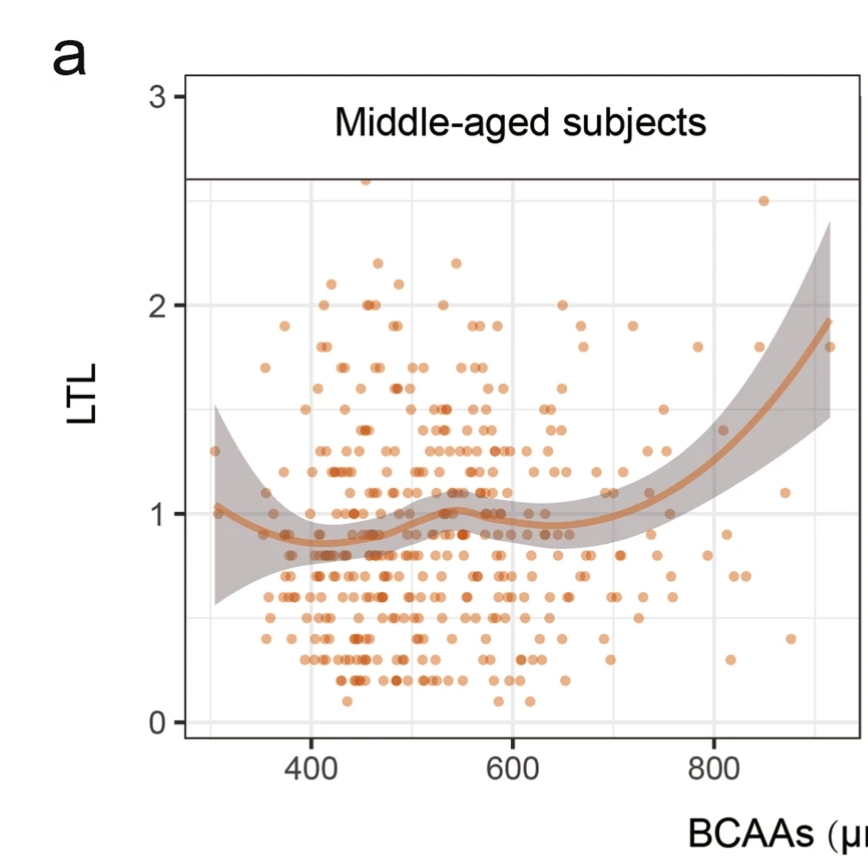Serum branched-chain amino acids are associated with leukocyte telomere length and frailty based on residents from Guangxi longevity county
Ying Zhang, Scientific Reports volume 10, Article number: 10252 (2020)
Branched-chain amino acids (BCAAs) and telomere length are biologically associated with healthy aging. However, the association between them and their interaction on frailty remain unclear in humans. Here, a cross-sectional study based on residents from Guangxi longevity county was conducted to investigate the association of serum BCAAs, peripheral leukocyte telomere length (LTL) and frailty. A total of 1,034 subjects aged 20 to 110 years were recruited in the study. The real-time qPCR method and a targeted metabolomics approach based on isotope dilution liquid chromatography tandem mass spectrometry (LC/MS/MS) method were used for measurement of LTL and BCAAs, respectively. A frailty score defined as the proportion of accumulated deficits based on 24 aging-related items was used assess the health status of elderly subjects.
First, we found that a higher concentration of BCAAs was significantly associated with longer LTL only in middle-aged subjects, independent of age and BMI (P < 0.05). In the oldest-old subjects, we identified a significantly inverse association between BCAAs and frailty score (P < 0.001), even after adjustment for age and BMI (P < 0.05). Additionally, we recognized a statistically significant synergetic interaction between BCAAs and LTL on frailty score in the oldest-old subjects by the general linear model (P = 0.042), although we did not find any significant association between LTL and frailty score.
In summary, our findings suggest a potentially protective effect of circulating BCAAs on LTL and frailty based on the subjects from longevity county in East Asia and indicate a potential synergetic interaction between BCAAs and LTL in healthy aging.














